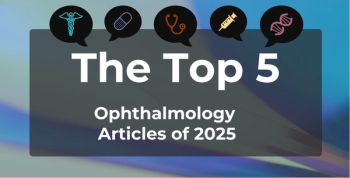
Provider Support Influential in Reducing Disparities in Patient Portal Use, Access
Access to electronic health information can be improved through provider assistance for optimal use of a patient portal.
Compared with White individuals in 2019 and 2020, Black and Hispanic individuals were
In addition, strong support from providers to use a patient portal strongly influenced the probability of patients to use the portal and those who were offered use of a portal and supported to use it were significantly more likely to access it vs those who were only offered use and not supported.
This study was conducted to recognize racial and ethnic disparities in the offer of, access to, and use of patient portals for EHI and how providers influence the use of portals by providing the option to patients and supporting their use.
Survey data from the Health Information National Trends Survey from 2019 to 2020 totaling 8028 people were analyzed using multivariable models to gauge the influence of race and ethnicity on offering, access, and use of a portal. Provider support and ensuring portal use were also measured, as well as reasons behind portal nonuse.
Categorized variables such as race/ethnicity were evaluated, with further evaluations on Black and Hispanic respondents compared with White respondents due to their lowest frequency of patient portal access and use.
Compared with White individuals, 54% of Black individuals and 49% of Hispanic individuals had a significantly lesser likelihood of being presented with the option to use a patient portal by their health care provider, and among those who were presented with the portal, they had lower rates of access.
In exploring reasons for portal nonuse, Black individuals were significantly more likely to report that they’d prefer to speak directly to a provider than White individuals and were more likely to cite privacy and security anxieties as reasons for portal nonuse. These reasonings could be improved by provider trust, the researchers state. Further, the language barriers faced by Hispanic patients might influence the likelihood that providers offer patient portal access and that Hispanic patients use the portal.
Asian individuals had a significantly higher likelihood of accessing the portal after it was offered (81%, the highest among all races/ethnicities). Portal rates were high for Asian individuals across all usage factors like being offered the patient portal, accessing the patient portal, and use of the portal among those offered and accessed. Table 2 details the percent of individuals.
Overall, after offer and access to the patient portal, 87% of people viewed test results, 39% of people used the portal to transmit or download health information, and 57% of people used it to communicate with their health care provider.
The researchers also found that health providers initially offering use of a portal no longer significantly influenced portal access rates. However, the role of health care provider support for patients to access the portal once offered significantly influenced the use of the portal by patients vs a patient only being offered the portal. The researchers stated that this result points to the importance of patient-provider communication and encouragement in the offer and use of patient portals.
Knowing that current attempts to reduce disparities have focused on the patient and not on provider education and portal improvements to increase equity, the researchers state that resolutions to specific barriers that restrict access and use in populations that report lower portal use and consistent incentivization of providers to offer portal use to patients are considered effective approaches. Multilingual portals and provider resources to assist in communication with those of limited English proficiency are possible solutions as well.
Some limitations of this study included the inability to identify unobserved preferences like attitude toward health providers, the use of self-reported survey results and potential ensuing biases of individuals who self-report, and the inability to detect the full and comprehensive range of complete diversity of all races and ethnicities in the United States.
This study highlighted the influence health provider support and encouragement has on utilization of patient portals for equal EHI access, the authors emphasized.
Reference
Richwine C, Johnson C, Patel V. Disparities in patient portal access and the role of providers in encouraging access and use [published online ahead of print, 2022 Nov 30]. J Am Med Inform Assoc. 2022;ocac227. doi:10.1093/jamia/ocac227
Newsletter
Stay ahead of policy, cost, and value—subscribe to AJMC for expert insights at the intersection of clinical care and health economics.








